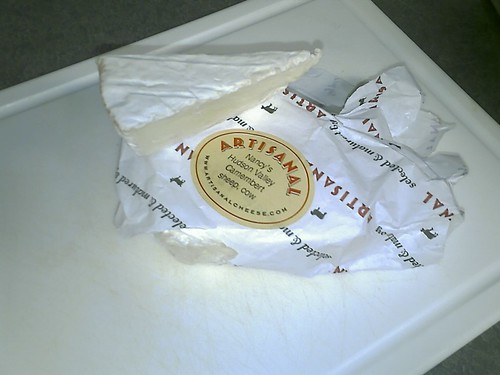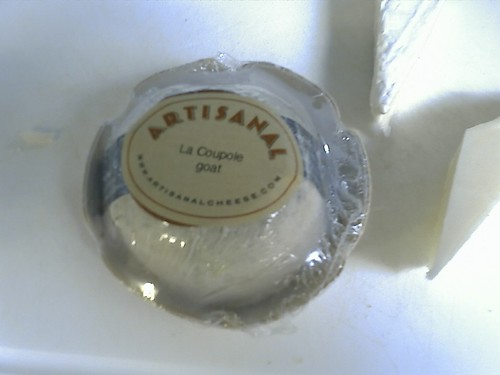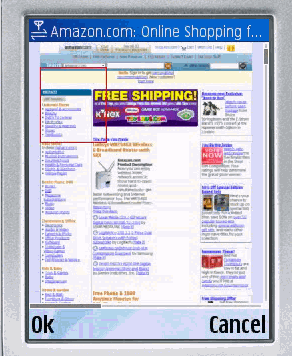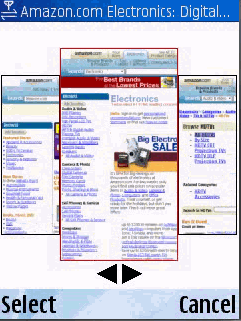Okay …
I am curious to see if I can somehow get the google wordprocessor to put a blog post on my blog….
I am curious to see if I can somehow get the google wordprocessor to put a blog post on my blog….
I have seen the light perhaps?
Or maybe not
Originally uploaded by kostadis
After almost a year with the same old boring decor, I decided I need to change things up.
So here’s my fish’s new digs.
Notice the faux-ancient monument in the left hand corner and the large object in the right hand corner.
The water is a tad-bit cloudy because I was trying to clean things up and that’s what happens …

From www.artisanalcheese.com:
Fiscalini Bandaged Cheddar is the product of master craftsman Mariano Gonzalez, who perfected his art at Vermon’ts Shelburne Farms developing one of the first domestic bandaged-wrapped cow’s milk Cheddars. Fiscalini Bandaged Cheddar is a true American farmstead cheddar and sings with a luxurious balance of buttery, grassy and savory flavors. This cheese is one of the few American cheddars that can compete with the famed cheddars of Neal’s Yard Dairy in England. Try this cheese with crisp apples, or toss a handful into pie crust for a truly sensational apple pie. Pair with an American Craft Ale or wines such as Pinot Noir, Gamay, Zinfandel, Chardonnay, and Grenache.
The cheese snob says: Whenever I fly through heathrow I buy a ridiculous amount of Cheddar that I must eat in the airport and in the flight home to avoid confiscation. There is something about English cheddar that simply makes it taste better. When I tried this cheese, something of that English cheddar was brought to mind. Now that I re-read the review, I am convinced that that memory was authentic. This is what cheddar is supposed to taste like. A
The casual cheese eater says: More please. A+

From www.artisanalcheese.com:
Nancy’s Hudson Valley Camembert made by Old Chatham Sheepherding Company is a creamy, soft-ripened cheese. A gold medal recipient at the 2007 World Cheese Awards. The Camembert is a meltingly smooth and buttery with a texture of triple-creme. Pairs beautifully with Champagne as well as Chardonnay, Riesling and Sauvignon Blanc.
The cheese snob says: This is a great Camembert. A
The casual cheese eater: Tasty, but Camembert is not my thing. B-

and

From www.artisanalcheese.com:
The Coupole, made by Vermont Butter and Cheese, is a fresh, young goat’s milk cheese shaped like a small dome and dusted with vegetable ash. As the Coupole ages, a slightly wrinkled skin develops, and the paste softens and liquefies.
The cheese snob says: Not as superb as the Hoja Santa, but still a delightful goats milk cheese. B
The casual cheese consumer says: I like it a lot. I don’t know why the snob thinks this is not as good as the Hoja Santa cheese. Can we buy more? A+.
Just the other day I was futzing with the Nokia N95 web browser and discovered that it had several features that were similar to the iPhone. For example the N95 has a mini-map:

and the time-travel feature:

I was intrigued. I checked out the relative Apple and Nokia corporate web sites and discovered that the touted features were in fact identical. So I set out to discover the source of the similarity.
Now it turns out that both Nokia and Apple in 2005 had agreed to partner on building a web browser based on Safari:
Nokia has announced that it using open source software in developing a new mobile Web browser for its Series 60 SmartPhone — and that this has been developed in cooperation with Apple.
The Series 60 browser will use the same open source components, WebCore and JavaScriptCore, that Apple uses in Safari that is based on KHTML and KJS from KDE’s “Konqueror” open source project.
Nokia said that it intends to continue its collaboration with Apple — and will actively participate in the open source community to further develop and enhance these components, contributing Nokia’s “expertise in mobility,” the company said.
And in fact Nokia’s open source project page describes exactly how the Safari web browser is the basis for their browser.
Mystery at last revealed, the reason the browsers are so similar is because they are the same browser.
I will observe that this further confirms my near universal irritation with the quality of technology journalism. The fact that the Apple hype machine implied the iPhone was unique in it’s use of Safari did not mean a few moments of fact checking would not have revealed that Apple was using someone’s else technology.
Originally, I was very sceptical of the value of the cell phone camera. I wondered why anyone would use a crappy digital camera embeded in their phone when perfectly good cheap digital cameras existed.
I concluded that there were two reasons:
I was so stupid.
I’ve been recently playing with my cell phone’s (Cingular 8525) digital camera. And I discovered, that there were two really, really good reasons to use a cell phone camera:
If you combine all these four reasons then the only reason you should not use a cell phone camera is the quality of the lens and sensors. But that’s where the Nokia N95 and Nokia N93i show that the future is the cell phone camera not the standalone snapshot camera. The N95 actually has a 5MP camera with a fansastic lens, a working flash but no zoom. The Nokia N93i is a great camera with a 3x zoom but has a less than ideal form factor. Both of these cell phones overcome the only real reason you would not use a cell phone, that the quality of the pictures is sub-par.
I suspect that the standalone snapshot digital camera will eventually disappear to be replaced by the cell phone camera.
One of the persistent worries I have is whether a particular technology I am in love with is really a boondoggle. In other words, the technology solves a hard problem in an interesting way that is useful because of some abnormal discontinuity computer system performance, but in reality is of transitory interest so spending much time and energy on the problem is of limited value.
Having said that, I thought to myself, well what is a computer science boondoggle exactly?
So I came up with the following pre-requisites of a boondoggle:
The field goes on boondoggle when someone determines that the barrier to using the compute resource is the application modification and so tries to come up with ways to transparently take advantage of said resource. In effect, the allure of this free compute resource, and the challenge of making it usable drags people down a rabbit hole of trying to make it easy to just transparently use this new compute resource!
The boondoggle ends when the compute resources that require no application modification eventually catch up eliminating the need to modify applications or use special libraries to get superior performance.
As an example, consider Software Distributed Shared Memory (SDSM). SDSM began life when people observed that in any engineering office there were these idle workstations that could be connected together to create a cheap supercomputer. People then observed, that to take advantage of said resource applications would have to be modified. So some applications were modified and performance gains were real. And it could have all ended there.
The SDSM boondoggle took hold, when some bright folks realized that modifying every application was going to take too much time. So they decided to invent this rather elegant way to allow applications to run, unmodified, on these networks of workstations. Of course, the problem was that applications assumed uniform memory access and SDSM provided non-uniform memory access, whose non-uniformity was measured in the 10s of milliseconds. Because of the latency issues and the non-uniform memory access, these unmodified applications performed poorly. It could have all ended right there, but the allure of this transparent way to take advantage of the performance of these idle workstations was so tantalizing that folks spent a significant amount of energy trying to make it work.
They failed.
What did happen was that computers got bigger and faster and cheaper making the performance gains less and less interesting given the amount of effort required to make them work using SDSM.
So SDSM was trying to exploit a discontinuity in computing resources (the relative costs of a collection of workstations versus a supercomputer), was trying to do it in an interesting way, but in reality was not of long term value because of the hardware compute trends that were in place at the time.
It’s happened. My Apple friends, you know the ones who run around proclaiming the Mac’s greatness, have gotten their hands on iPhones. Now I will be subjected to claims about how great the iPhone is and how it changes everything in the cell phone market. Already they are asking whether, Nokia, the global leader with 400 million phones sold per year and approximately 50 000 employees devoted to exactly one market is doomed, doomed I tell you.
Let us, for a moment, exit the Steve Job’s reality distortion field. So I’ll make two seemingly contradictory statements:
Let me start with (1).
Apple has consistently occupied a niche in the broader general personal compute market. A market I define to include all devices that people use to browse the web, message, entertain themsevles and generate content with. If you exclude the biggest segment, the cell phone, Apple’s global share of the PC market is an almost irrelevant 5%. The problem for Apple is that the 5% Apple owns is absolutely irrelevant to the emerging personal compute platform that is the cell phone. In other words, regardless of whether Apple owned 10 or 15% of the laptop market without some kind of cell phone strategy the long term prospects of the company were questionable. The thesis for this argument is that as more and more users migrate to cell phones to do most of their laptop activities, the value of the laptop declines and the value of the cell phone as their dominant personal compute platform increases. In other words, over time, the cell phone becomes the laptop, the laptop becomes the desktop, and the desktop becomes the mainframe. Why this is important to Apple, is that Apple’s market tends to self select among people who are willing to adopt newer and more exotic technologies. There was always the possibility that the right phone may affect Apple faster than the broader Microsoft market.
Furthermore, the reality is that unlike Microsoft, who after 6 years of trying finally has finally produced a credible cell phone OS that actually runs on a non-trivial amount of cell phones Apple had zero presence in the market. Vista and Mobile Windows are fairly well integrated and that the integration creates the possibility that the Mobile Windows may drive Windows OS sales over time. This could, in theory, impact Apple’s long term (tiny) position in the computer market.
Apple had two strategies open to it. One was to try and get cell phone manufacturers to adopt the Mac OS or Apple applications preserving some kind of presence in the cell phone market. The second was to build their own custom designed cell phones. Proving, again, that Apple is a hardware and not software company, the strategy they chose to adopt is to build their own phone with their own OS. In effect, Apple decided that Apple needed to build their own device so as to provide a home for their fans so as to preserve Apple’s overall share of the personal compute market.
In fact, the iPhone’s success is critical to Apple. If the iPhone flops, this may create an oppening for some of those Apple users to migrate to other computer platforms. The reason may be better integration with their dominant compute platform, namely the cell phone. Thankfully, for Apple, the early news is that the ancient hardware platform they built has been a smashing success with their fans, thanks to the rather clever software interface they built. So kudos to Apple!
Having just congratulated Apple on their first phone, I am worried that the first cell phone they produced was already ancient in terms of hardware technology. The cell phone market is not the mature PC market. The cell phone is a rapidly evolving hardware platform. There is an open question as to whether Apple can simultaneously sustain the level of innovation in both the PC and cell phone market necessary to compete over the long haul. An iPhone that is always two years behind the rest of cell phone market becomes less interesting over time.
Now let me address point (2):
Even if the iPhone succeeds it is irrelevant to the broader cell phone market and will barely affect the broader cell phone market.
The most irritating aspect of the Apple fan is his belief that the iPhone will somehow change the dynamics of cell phone market or perhaps even disrupt the dominant player in the cell phone market, Nokia. The central thesis of the argument is the following:
Before I even point out why I think this argument is deeply flawed, let me observe that the iPhone is irrelevant to the broader cell phone market.
The total cell phone market is approximately 1 000 000 000 cell phones (http://www.ipsnews.net/news.asp?idnews=36161) per year. If the iPhone sells 5 million per year that’s 0.5% of the global market. As a point of comparison, Nokia sold 106 million phones in the quarter ending Jan 1st 2007 (http://www.infoworld.com/article/07/01/25/HNnokiasalesup_1.html)
Heck even in the United States there are approximately 120 million subscribers between verizon and att. Assuming 1 cell phone per subscriber, if the iPhone sells 10 million units it will have hit ~8% of the verizon/att market and less than 4% of the total US market.
Practically speaking the iPhone may eventually own a tiny market of the global market, but is utterly irrelevant in the places where the growth in phones is most dramatic (the emerging markets of China, India and Africa) because of the cost and form factor of the device.
The most optimistic scenario for the iPhone for it’s impact therefore, is the following:
I think in the most optimistic scenario,the iPhone is to the general mobile cell phone market what the Mac is to the PC: pushing a few trends faster but generally irrelevant.
Of course, anyone who believes in disruptive technology will gladly point out that the dominant players are never weaker than when they appear strongest.
So is the iPhone like the iPod, disruptive to the rest of the cell phone market?
I think the answer is no. The iPod was disruptive to the personal media market because it was the first device that had enough capacity to carry most of your music as well as an elegant form factor. The iPod was, therefore, able to take advantage of the transition of media to digital form. The reason no one else was able to respond was that the players in the market at the time were either too small to compete with Apple or (cell phone manufacturers and Microsoft) completely missed the boat.
The iPhone has a pretty UI on top of a marginal hardware platform. Apple has not invented the first usable cell phone. Apple may have invented the first usable cell phone based web browser. However, the problem is that the cell phone vendors are not some puny players that are incapable of reacting and Apple’s global share is too small to make their current advantage meaningful. The most reasonable claim is that Apple’s disruptiveness is tied to the fact that they do software and they understand industrial design. The problem is that cell phone vendors understand industrial design (Motorolla RAZR) and increasingly understand the value of software (possibly because of Microsoft). The major cell phone manufacturers are aware of the importance of the software platform and have been aggressively investing and re-organizing to become software players. If you combine their ability to innovate in hardware, their manufacturing capacity, their global reach and their new found focus to create software the most likely outcome is what I said earlier:
I think in the most optimistic scenario,the iPhone is to the general mobile cell phone market what the Mac is to the PC: pushing a few trends faster but generally irrelevant.
I just don’t see the cell phone vendors falling asleep and giving Apple the time necessary to build the capacity necessary to compete with them. Of course, I could be wrong, but it seems extraordinarily unlikely.
I still believe the largest long term threat to the cell phone manufacturers and in particular Nokia is Windows Mobile because of the increasing integration between the cell phone and the laptop. Having said that, the laptop may become irrelevant over time, making that integration a niche part of the overall personal compute market.
In short, bravo to Apple for introducing a good phone. But unlike Steve, I believe this changes nothing.